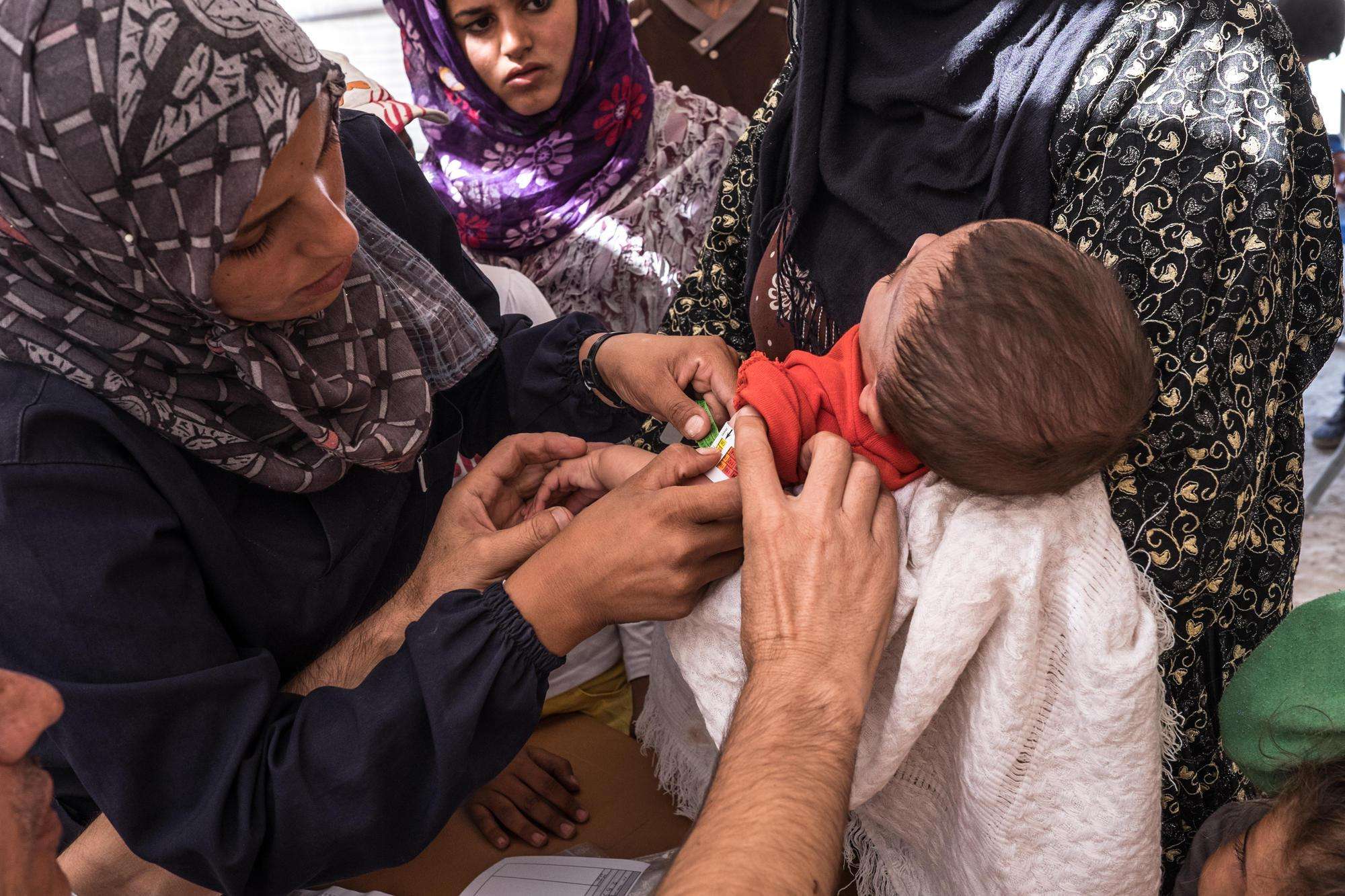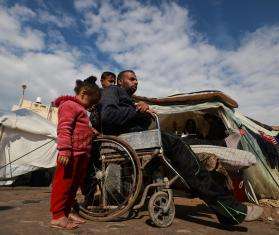The offensive on Raqqa that started in June 2016 ended on October 17 when the Syrian Democratic Forces (SDF), supported by the international coalition, took control of the city, which has been cleared of fighters from the Islamic State (IS) group. However, the end of the battle in Raqqa doesn’t mean that the war in this part of Syria is over—or that people in the region are no longer suffering.
How did people flee from Raqqa?
People who fled the city and surrounding villages in the past months had to make impossible decisions: whether to stay put under heavy bombardment or risk leaving the city by crossing active front lines and minefields.
Having made the decision to leave, escaping Raqqa—which was known as the IS group stronghold—was fraught with difficulty and danger. People were punished if they tried to flee, and generally managed to leave only by paying huge bribes. In recent days and before the battle ended, approximately 1,300 people who fled the city arrived at the Ain Issa camp for internally displaced people (IDPs).
What’s the current humanitarian situation in Raqqa and for people fleeing the city?
The battle for Raqqa ended on October 17, and to MSF’s knowledge civilian populations left the city under frightening circumstances as fighting drew closer to populated neighborhoods. According to the coalition, about 3,000 civilians were rescued during the last week of fighting, i.e. after an evacuation deal was agreed upon with the IS group. It appears that civilians have been directed to Ain Issa camp, which already hosts almost 12,000 IDPs from Raqqa and Dier El Zour, where they undergo further security screening. It’s not clear what this process entails, or for how long people are detained at these camp locations before being allowed to go home or to other safer areas.
From October 10 to October 18, 1,274 people arrived to Ain Issa IDP camp from Raqqa city. They were brought by the SDF. Nearly all are kept in a "security area" 200 meters [about 656 feet] away from the camp. It’s not clear why people newly arrived from Raqqa are kept segregated from the regular camp.
Most of the people who fled Raqqa during the last week are women and children. Some are elderly men or young men who have had limbs amputated or have external fixators or gunshot wound.
How is MSF supporting people who fled Raqqa?
IDPs in regular areas of the camp have access to an outpatient department run by MSF. A consultation point was also set up in the special security area. Overall, MSF has provided 77 medical consultations, mainly to women and children, and referred 13 patients to Kobane hospital for treatment of infected wounds and/or bleeding.
Another MSF team is conducting a vaccination response among new arrivals to ensure that children who have missed vaccinations get caught up. This campaign will also mitigate outbreaks of diseases like measles and polio.
People coming from Raqqa and Deir ez-Zor are afraid, uncertain of their future, and in need of clothes, food, water, shelter, health care, and protection.
What kind of injuries are MSF teams seeing?
As the front lines shifted during the Raqqa battle, especially as they drew closer to the most-populated neighborhoods, MSF teams in Tal Abyad hospital started to see more patients with weapons-related injuries.
On some days up to twenty patients arrived at the hospital, most with blast wounds from bombs and landmines and with trauma related to building collapses caused by airstrikes. In the last days of the fighting the numbers of these patients dropped, but MSF remains concerned for the injuries that lie ahead as people start to return to their homes and neighborhoods and encounter unexploded ordinance and explosive remnants of war.
In Kobane hospital MSF treated very few patients wounded in the fighting. In July, MSF treated 63 patients injured mainly by mine and bomb blasts and gunshots. In August, three patients were treated.
Where is MSF working in Raqqa governorate?
MSF is working in Tal Abyad hospital, supporting trauma care, surgery, and the overall running of the facility, in partnership with the local health authorities. Eight ambulances provide referral services around Raqqa city for access to MSF-supported secondary health care facilities in Kobane, Menbij, or Tal Abyad. MSF also maintains advanced medical points in Hazima and Tabqa, north of Raqqa city, for patients in the northern Raqqa countryside who need emergency medical care. Five vaccination teams work across the governorate, including in Ain Issa camp.
Inside the camp, MSF runs an outpatient department, nutritional activities with supplementation for infants and children under five years old, health promotion, and mental health and physiotherapy activities. MSF also runs a primary health care clinic in the city of Tabqa and a team works in Kobane hospital, supporting the emergency room, the intensive unit care, the operating theater, the recovery room, and all surgical cases.
Is MSF inside the Raqqa City?
No. Landmines and explosive remnants of war make it extremely dangerous to enter the city. The area must be fully de-mined before any assistance can be provided there.
What kind of humanitarian response is still needed in the area?
Humanitarian organizations need to be present to support people who have been affected by the conflict and provide impartial, neutral, and meaningful assistance. An organized approach between all humanitarian actors to assess the needs in the camp, including water and sanitation, health care, and food must be carried out. As winter approaches in Syria, people who fled Raqqa will be planning to go back home. They will return to demolished towns and no means of living and will also need shelter, water, food, and heating resources.




